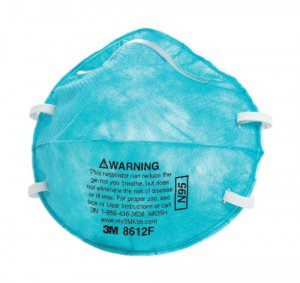

An unpublished study of respiratory protection in hospital workers in Beijing compared the effectiveness of surgical masks, fit- and non-fit tested N95 respirators in conferring protection from clinical respiratory illness, influenza-like illness, and laboratory confirmed influenza. Surgical masks were not effective, while those wearing N95 masks had 75% protection against influenza. Whether the N95 was fit-tested or not made no difference.
Also discussed were the findings of a published comparison of surgical masks and P2 respirators (similar to N95) in Australian homes in which a child had respiratory illness. There was a four-fold reduction in clinical illness for individuals wearing either mask. Slides describing the Beijing and Australian findings are available as a pdf.
In another study in Hong Kong, households were divided into three groups. One group was given only basic health education, while the second group was told to practice hand hygiene with soap and an alcohol hand rub. The third group of households used hand hygiene and surgical face masks. The investigator concluded that “substantial and significant benefits of face masks and hand hygiene if implemented within 36 hours of index case symptom onset.” The slides from this presentation are available as a pdf.
Here is information from the Food and Drug Administration on N95 face masks:
An N95 respirator is a respiratory protective device designed to achieve a very close facial fit and very efficient filtration of airborne particles. In addition to blocking splashes, sprays and large droplets, the respirator is also designed to prevent the wearer from breathing in very small particles that may be in the air.
To work as expected, an N95 respirator requires a proper fit to your face. Generally, to check for proper fit, you should put on your respirator and adjust the straps so that the respirator fits tight but comfortably to your face. For information on proper fit, refer to the manufacturer’s instructions.
The ‘N95’ designation means that when subjected to careful testing, the respirator blocks at least 95% of very small test particles. If properly fitted, the filtration capabilities of N95 respirators exceed those of face masks. However, even a properly fitted N95 respirator does not completely eliminate the risk of illness or death.
N95 respirators are not designed for children or people with facial hair. Because a proper fit cannot be achieved on children and people with facial hair, the N95 respirator may not provide full protection.
What does all this mean? If you wear an N95 properly and continuously, it will confer some protection against respiratory infection. But it won’t help if you poke a hole in the N95 to enable cigarette smoking.
MacIntyre, C. (2009). Face Mask Use and Control of Respiratory Virus Transmission in Households Emerging Infectious Diseases, 15 (2), 233-241 DOI: 10.3201/eid1502.081167

Pingback: Return of swine-origin H1N1 influenza to the US
do the generic ones block out any cigarette smoke?